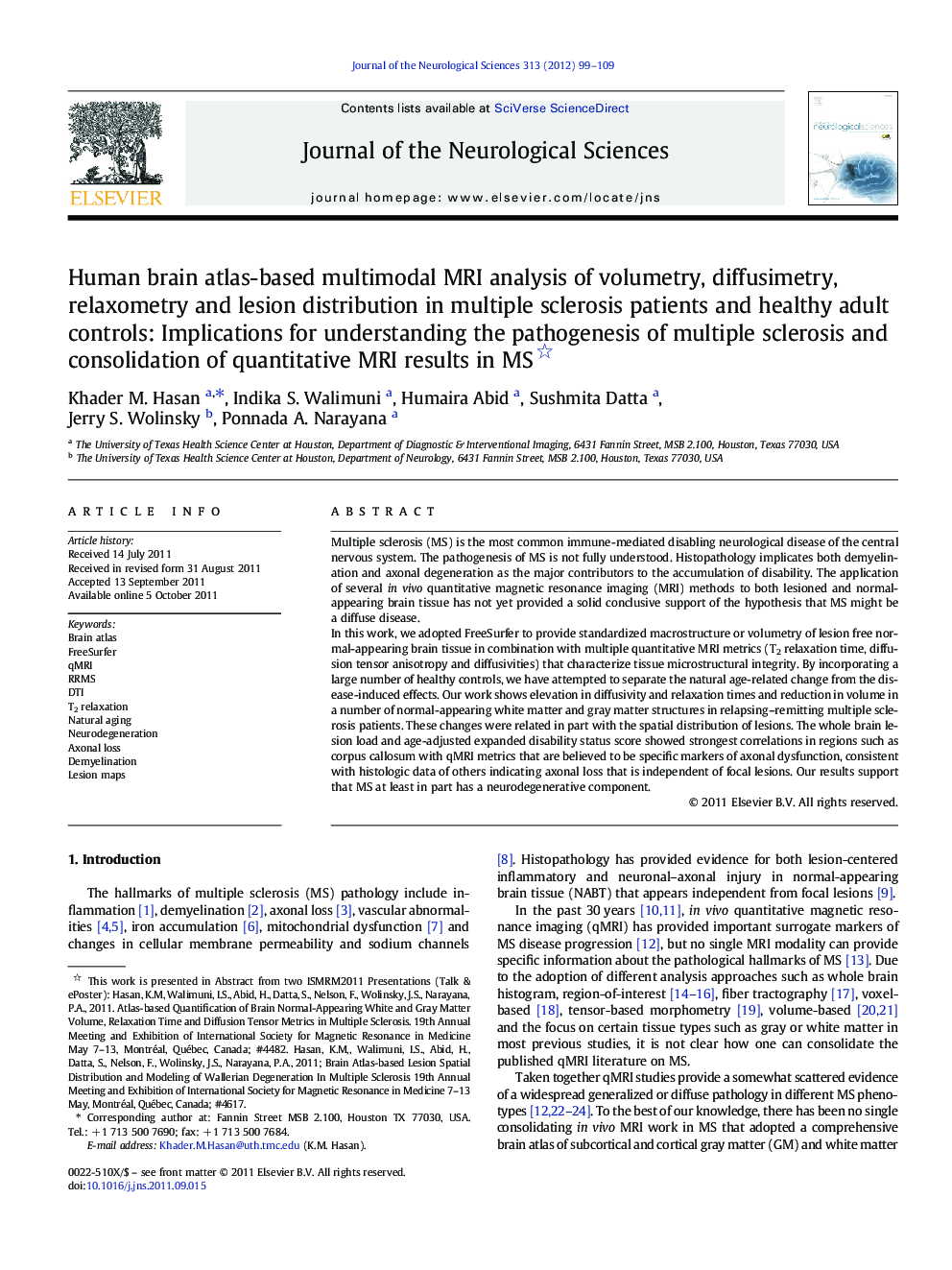| Article ID | Journal | Published Year | Pages | File Type |
|---|---|---|---|---|
| 1914100 | Journal of the Neurological Sciences | 2012 | 11 Pages |
Multiple sclerosis (MS) is the most common immune-mediated disabling neurological disease of the central nervous system. The pathogenesis of MS is not fully understood. Histopathology implicates both demyelination and axonal degeneration as the major contributors to the accumulation of disability. The application of several in vivo quantitative magnetic resonance imaging (MRI) methods to both lesioned and normal-appearing brain tissue has not yet provided a solid conclusive support of the hypothesis that MS might be a diffuse disease.In this work, we adopted FreeSurfer to provide standardized macrostructure or volumetry of lesion free normal-appearing brain tissue in combination with multiple quantitative MRI metrics (T2 relaxation time, diffusion tensor anisotropy and diffusivities) that characterize tissue microstructural integrity. By incorporating a large number of healthy controls, we have attempted to separate the natural age-related change from the disease-induced effects. Our work shows elevation in diffusivity and relaxation times and reduction in volume in a number of normal-appearing white matter and gray matter structures in relapsing–remitting multiple sclerosis patients. These changes were related in part with the spatial distribution of lesions. The whole brain lesion load and age-adjusted expanded disability status score showed strongest correlations in regions such as corpus callosum with qMRI metrics that are believed to be specific markers of axonal dysfunction, consistent with histologic data of others indicating axonal loss that is independent of focal lesions. Our results support that MS at least in part has a neurodegenerative component.
